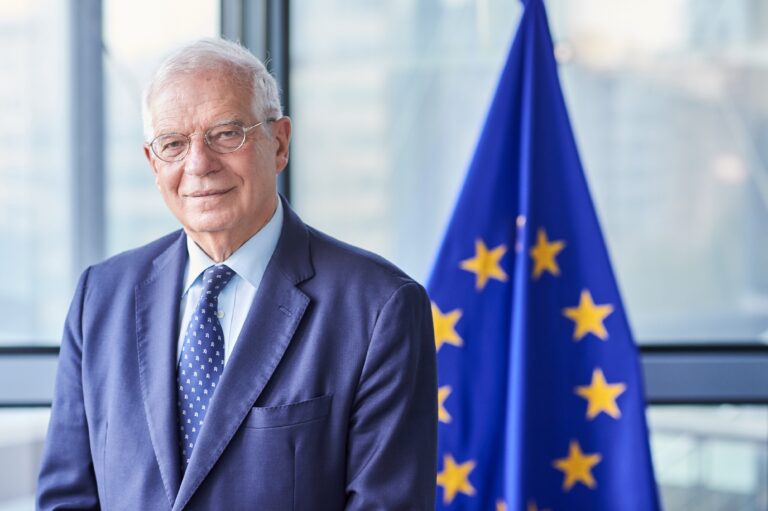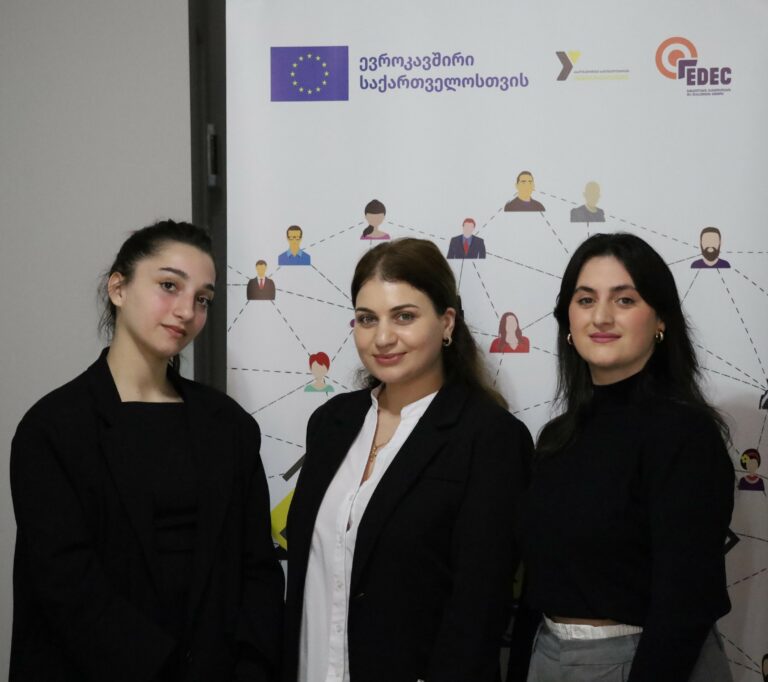
eSignature taking a step towards the digital future
Imagine that you own a small business and spend hours every week signing documents. Wouldn’t it be easier if you knew that you could sign the documents electronically, at any time, from any part of the world, using an electronic ID that can easily be recognised as authentic by other parties?
In our modern 21st century, where everything from trade to public services has gone digital, the issue of trust in the online space is very important. Which source of information, which documents can we trust? How can we verify this? A qualified electronic signature (eSignature) is a solution that enables individuals to sign documents remotely. An eSignature guarantees the authenticity of a document, can be valid across borders, and helps people save time, while strengthening online trust and security.
To make an electronic signature trustworthy across borders, the European Union’s EU4Digital Facility has implemented a cross-border eSignature pilot. This pilot tested the operation of cross-border eSignature between two Eastern partner countries – Moldova and Ukraine – and EU country Estonia, aiming to increase readiness for cross-border mutual recognition. While only three countries piloted the solution, eSignature is an important building block of the international digital economy. The pilot provides the opportunity to lay the foundations for wider uptake in the Eastern Partnership region, and for the other Eastern partner countries of Armenia, Azerbaijan, Belarus and Georgia to take the lessons learned and increase their readiness towards mutual recognition of trust services between them and with the EU.
What does the eSignature pilot mean?
A qualified eSignature and other digital trust services provide the opportunity for an easy sign off and exchange of electronic documents. These solutions contribute as fundamental blocks of the international digital economy. Ask yourself a question: which countries can currently recognise documents created in the Eastern partner countries? Is the legislation of an individual Eastern partner country compatible with European regulations?
In the European Union, digital trust services, including eSignature, are regulated by the eIDAS Regulation. This regulation establishes a single framework for electronic identification (eID) and eSignatures in the 27 EU Member States. However, the technological, organisational and legislative frameworks differ among the Eastern partner countries and from the EU. These differences mean that digital solutions are not necessarily able to interact seamlessly across borders, which is where the eSignature pilot comes in.
The pilot was launched in April 2020. The main activity was to test the functioning of cross-border eSignature in three countries: two Eastern partner countries – Ukraine and Moldova – and one EU country – Estonia. The countries participating in the pilot first had to agree on common principles and formats, including timestamping, validation mechanisms and the certificate status checking components. At first glance, the common principles may seem straightforward, but from a practical point of view, the technical implementation required complex coordinated actions in a multi-stakeholder environment to enable a technically operational and interoperable eSignature solution across borders.
What does the eSignature pilot project change?
During the pilots, the teams of piloting countries have gained practical experience in setting up a cross-border interoperable eSignature service. In doing so, they have taken steps towards further development and readiness for cross-border mutual recognition of digital trust services.
Digital trust and security expert Nikoloz Gagnidze, who acted as Trust and Security Network Coordinator under EU4Digital for the six Eastern partner countries, said the pilot aimed to pave the way for technical and legislative changes for cross-border eSignatures in the Eastern partner countries. One of the important next steps would be to sign mutual recognition agreements between the Eastern partner countries, and then with the EU Member States.
Gagnidze said that in terms of recognition of digital trust services, the Eastern partner countries are just a few steps behind European standards, with Georgia, Ukraine and Moldova leading the way. “Our legislation is compatible with the eIDAS Regulation but there are other technical and procedural issues that need to be improved to be fully compatible with the EaP countries and the EU. Then we will be able to mutually recognise eSignatures [across borders],” he said.
The final goal of the project is to increase the readiness for cross-border mutual recognition of eSignatures. As Giorgi Jijeishvili, Director of Georgia’s Public Service Development Agency which issues digital trust certificates, explains: “When you will sign with the ID card, it will be recognised by the EU countries and given legal force. This will be a very important step – probably second only after visa liberalisation – bringing us closer to the EU. Without this initiative, we would have great difficulties in developing eSignatures [compatible with EU requirements], as the process depends not only on political will but on the technical side as well. The pilot project encourages both directions.”
Mutual recognition
This is where the cross-border eSignature piloted by EU4Digital is so significant: its full-scale implementation is one of the key enablers to extend the benefits of the Digital Single Market to the EU’s Eastern Neighbourhood. Building on the experience of the pilot, the EU4Digital Facility developed practical recommendations for pilot participants to improve the readiness for mutual recognition of electronic identification across the Eastern Partnership region, in line with EU standards.
“The eSignature pilot is a small step towards major changes for the digital future, with trusted digital services legally recognised across borders,” says EU4Digital Facility Trust and Security Stream Leader, Martynas Daugirdas. “For a wider landscape, in the EU4Digital Facility we work to define the framework for the interoperability of cross-border e-services – the framework that is designed to set the tone for harmonised actions towards developing and running interoperable e-services for a better life of citizens and businesses across borders.”
Through EU4Digital, the European Union has set ambitious goals. As Martynas Daugirdas says: “We try to set the pace for the digital future, with the digital paradigm at the heart of everything that is a service – digital, interoperable, reliable, and therefore seamless – in countries and across borders for businesses and citizens. In order to remain realistic in paving the way, we have introduced a series of cross-border piloting activities to have an early proof of concepts, to learn, share and motivate all those involved.”
The EU4Digital Facility pilots in digital trust services aim to prove that in a contemporary 21st century society there are processes, tools and technologies that can enable countries to recognise each other’s digital trust services, thus enabling and growing the digital economy opportunities between them. The EU4Digital Facility is looking forward to extending eSignature pilots to other Eastern partner countries.
By developing trust and security in the digital economy, the EU simplifies electronic transactions that businesses and citizens need, makes them more secure, faster and cheaper, and supports resilience of the most important digital infrastructure in sectors such as telecommunication, energy, transport and banking. This results in a stronger, more dynamic economy and increased consumer trust.
Find out more about the cross-border eSignature pilots and the EU4Digital Initiative.
MOST READ
SEE ALSO

‘The Kremlin has entered the chat’: how to protect your personal data on Telegram and avoid the bait of propaganda

No, time is not on Russia‘s side

Socks for Peace: how the Vilni project is supporting internally displaced women in Ukraine

Celebrating traditional Ukrainian cultural identity in Rivne

A hands-on approach to boost youth employment in Georgia
More campaign pages:
Interested in the latest news and opportunities?
This website is managed by the EU-funded Regional Communication Programme for the Eastern Neighbourhood ('EU NEIGHBOURS east’), which complements and supports the communication of the Delegations of the European Union in the Eastern partner countries, and works under the guidance of the European Commission’s Directorate-General for Neighbourhood Policy and Enlargement Negotiations, and the European External Action Service. EU NEIGHBOURS east is implemented by a GOPA PACE-led consortium. It is part of the larger Neighbourhood Communication Programme (2020-2024) for the EU's Eastern and Southern Neighbourhood, which also includes 'EU NEIGHBOURS south’ project that runs the EU Neighbours portal.

The information on this site is subject to a Disclaimer and Protection of personal data. © European Union,







